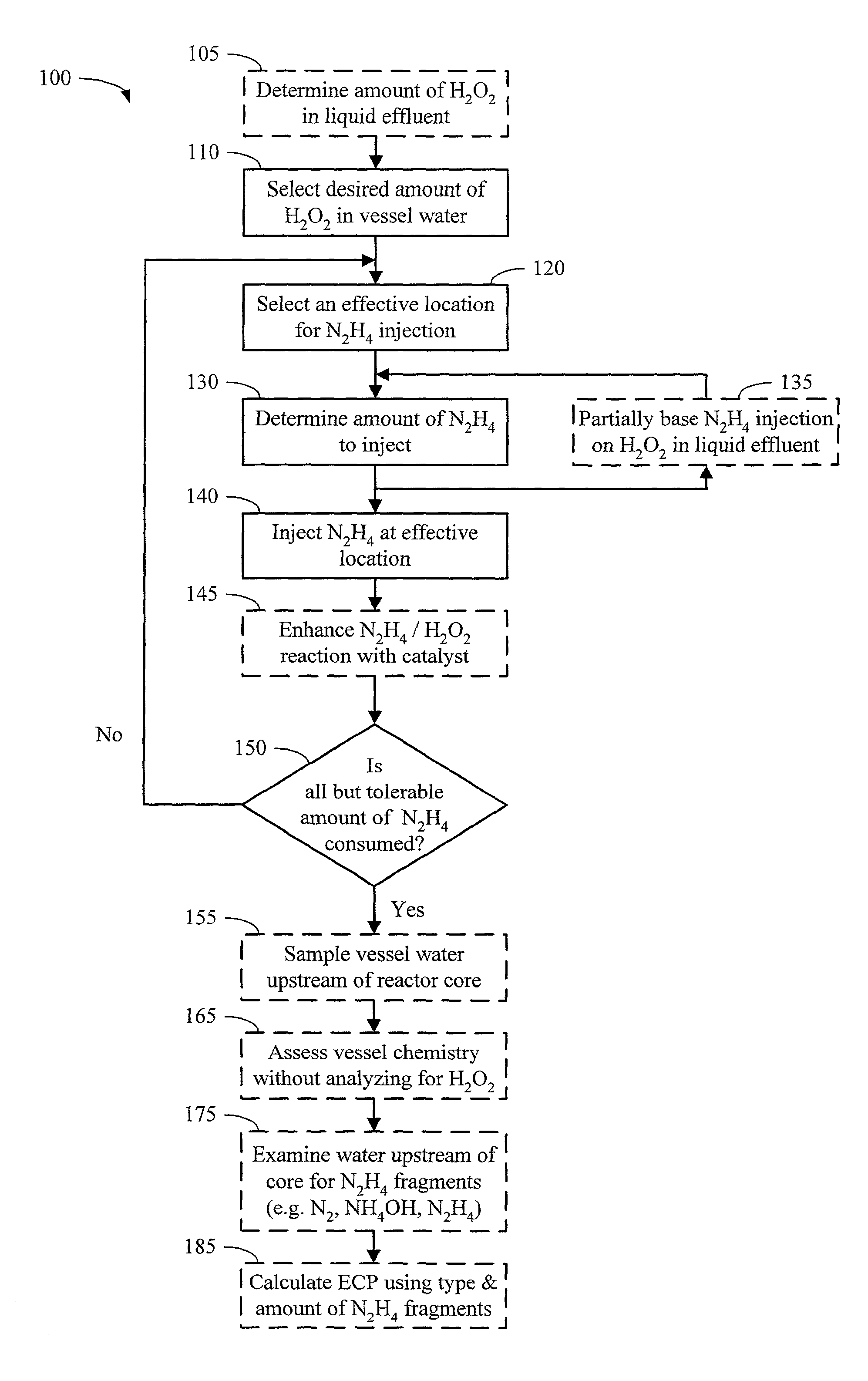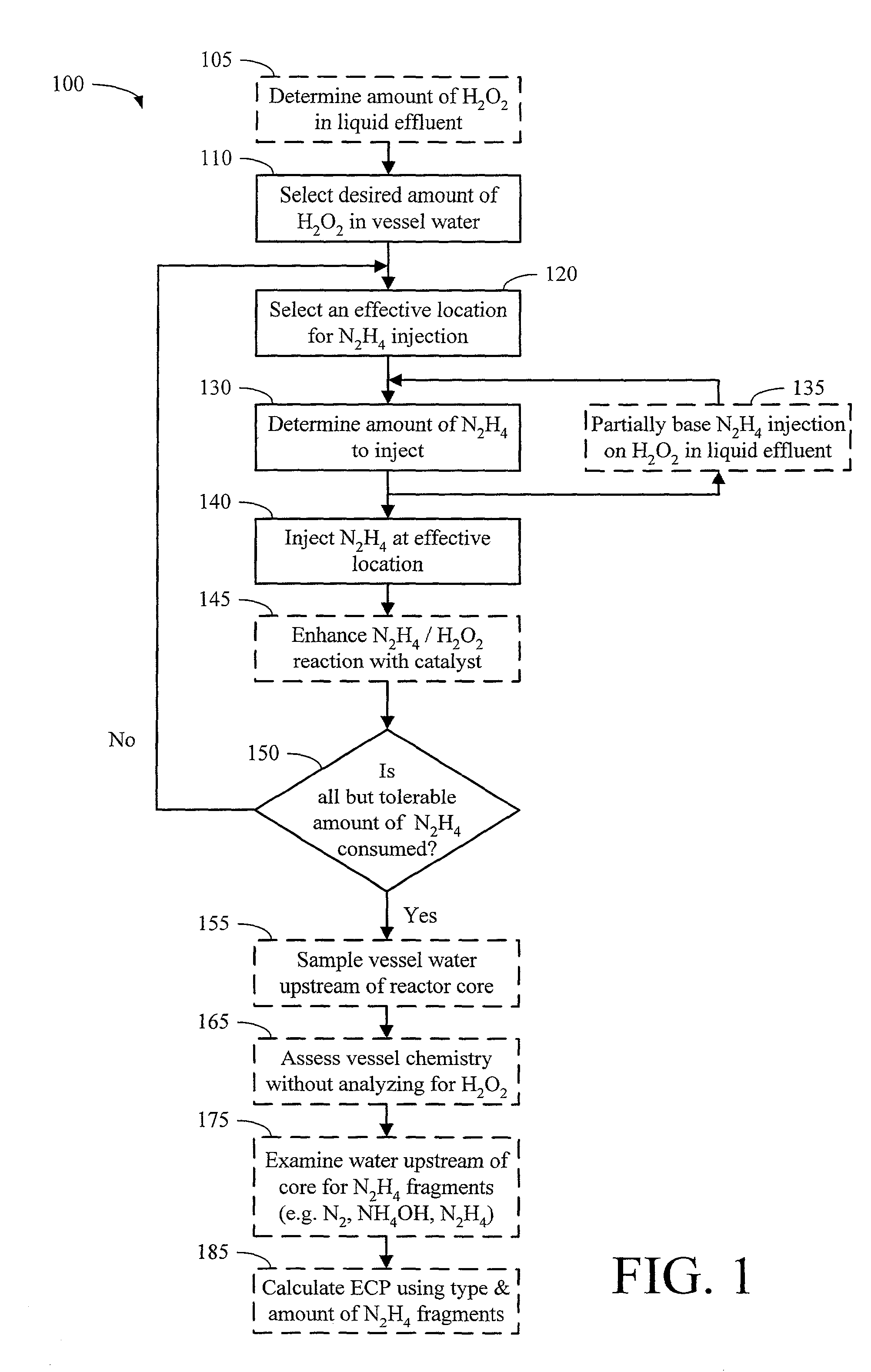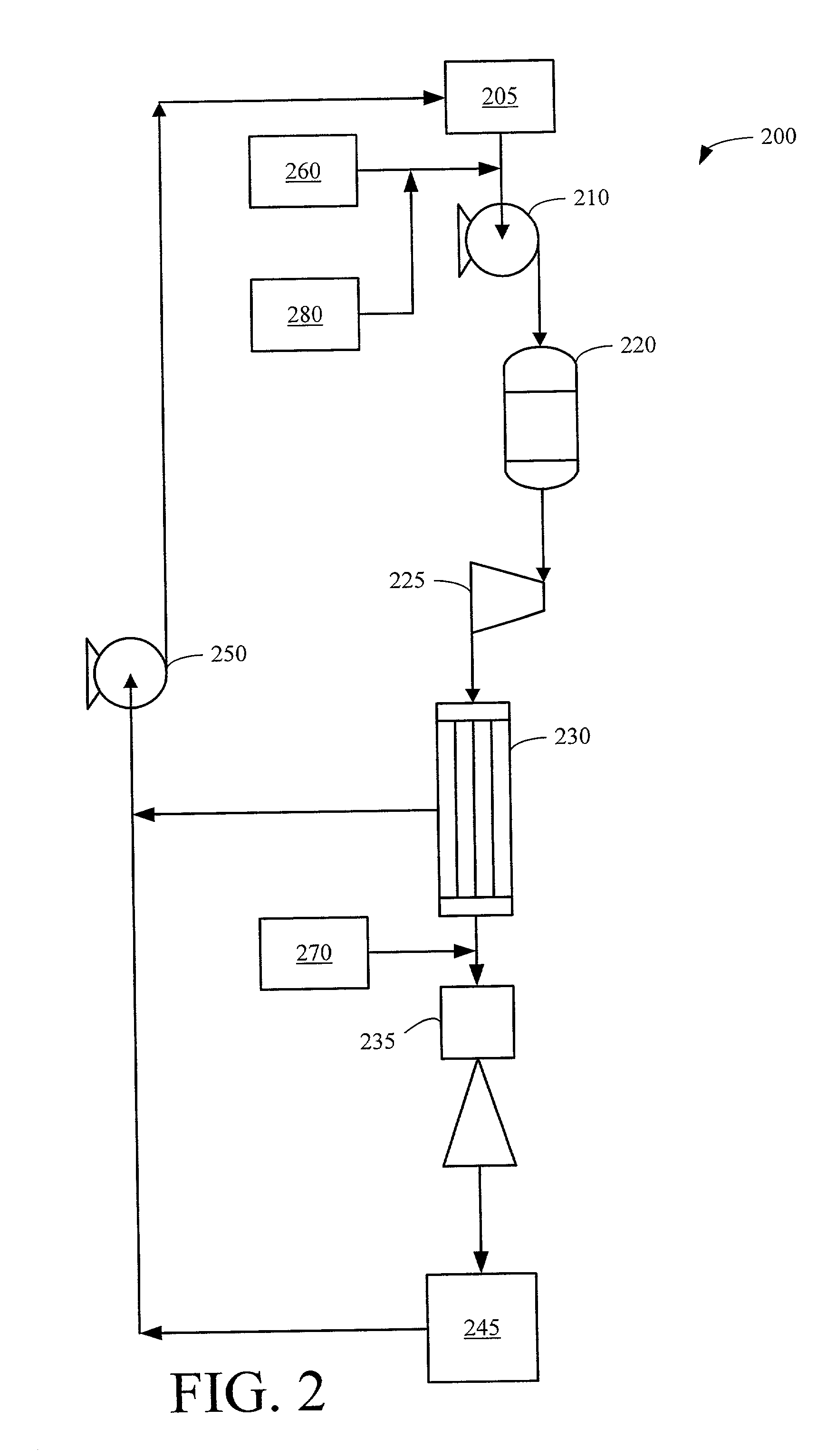Method for controlling boiling water reactor vessel chemistry
- Summary
- Abstract
- Description
- Claims
- Application Information
AI Technical Summary
Benefits of technology
Problems solved by technology
Method used
Image
Examples
example 2
Adequacy of Air In-leakage and Hydrazine Usage Rates
[0062] The current technology for both hydrogen water chemistry and hydrogen / noble metals water chemistry require a separate, significant oxygen source to recombine excess hydrogen that is not recombined in the reactor vessel. This technology requires sophisticated control systems to avoid accumulations of hydrogen which could cause detonations. It also requires the purchase of oxygen, which increases the cost of operation.
[0063] The hydrazine / hydrogen peroxide reaction is predicted to be very nearly complete in BWR reactor vessel 200. The excess hydrogen that is formed will be supplied primarily from steam dryer / separator liquid effluent and some incomplete hydrazine / hydrogen peroxide reaction. This excess hydrogen volume is predicted to be much smaller than either of the current technologies, and therefore can be totally recombined with oxygen available from condenser air in-leakage before being sent to AOG System 245.
[0064] For ...
example 3
Relative Cost Comparisons
[0065] The consumption rate of hydrazine for a BWR system is significant but manageable and can be achieved using portable equipment at a modest rental fee. Although the operating costs are estimated to be up to 5 times more than a hydrogen injection system, the significant savings is realized in capital expenditures. It is estimated that hydrazine capital equipment costs are approximately 30 to 70 times less than a hydrogen injection system. The primary reasons are simpler control equipment and smaller equipment footprint. A hydrazine addition system may be more cost effective for up to 20 years. However, to achieve this favorable balance, both ECP field performance and reactor water cleanup resin usage (to address hydrazine impurities) of the hydrazine addition system must be verified.
example 4
Residence Times of Hydrazine in BWR Components
[0066] For a BWR reactor vessel, vessel water can enter the below core region rapidly when it is "driven" directly through the jet pumps. When this flow path is taken, there is approximately 10 to 15 seconds (sec) for a reaction to take place before excess N.sub.2H.sub.4 potentially enters the reactor core. Hydrazine can adequately react with H.sub.2O.sub.2 during this time, but will only partially react with oxygen which requires about 30 sec at 200.degree. C. to 230.degree. C. (400.degree. F. to 450.degree. F.). For this reason, H.sub.2O.sub.2 is the primary target. Since H.sub.2O.sub.2 is considered the more aggressive oxidizer, and a significant source of oxygen to the below core region (e.g. supplies approximately 40% to 50% of the O.sub.2 when it breaks down from H.sub.2O.sub.2 to water and oxygen), eliminating hydrogen peroxide in the mixing plenum will have a significant effect on improving ECP in the downcomer, recirculation, an...
PUM
 Login to View More
Login to View More Abstract
Description
Claims
Application Information
 Login to View More
Login to View More - R&D
- Intellectual Property
- Life Sciences
- Materials
- Tech Scout
- Unparalleled Data Quality
- Higher Quality Content
- 60% Fewer Hallucinations
Browse by: Latest US Patents, China's latest patents, Technical Efficacy Thesaurus, Application Domain, Technology Topic, Popular Technical Reports.
© 2025 PatSnap. All rights reserved.Legal|Privacy policy|Modern Slavery Act Transparency Statement|Sitemap|About US| Contact US: help@patsnap.com



